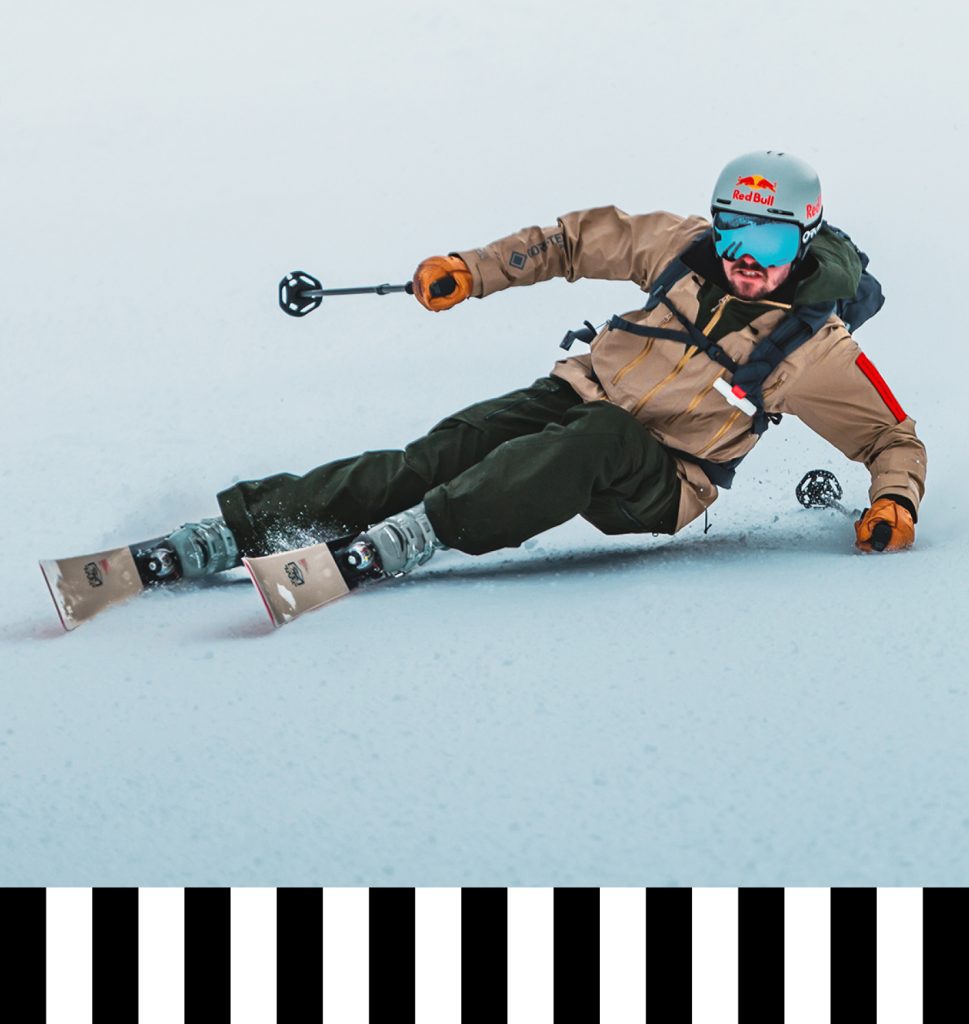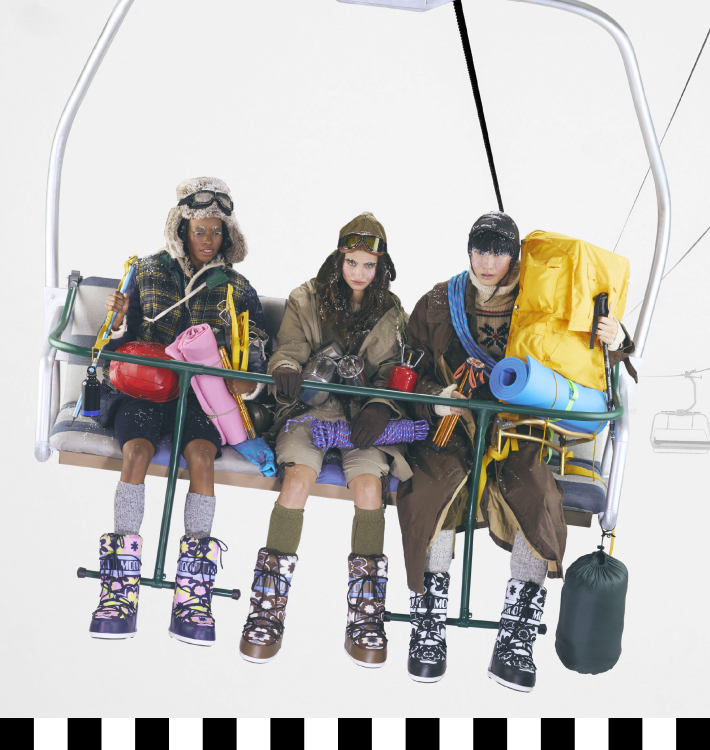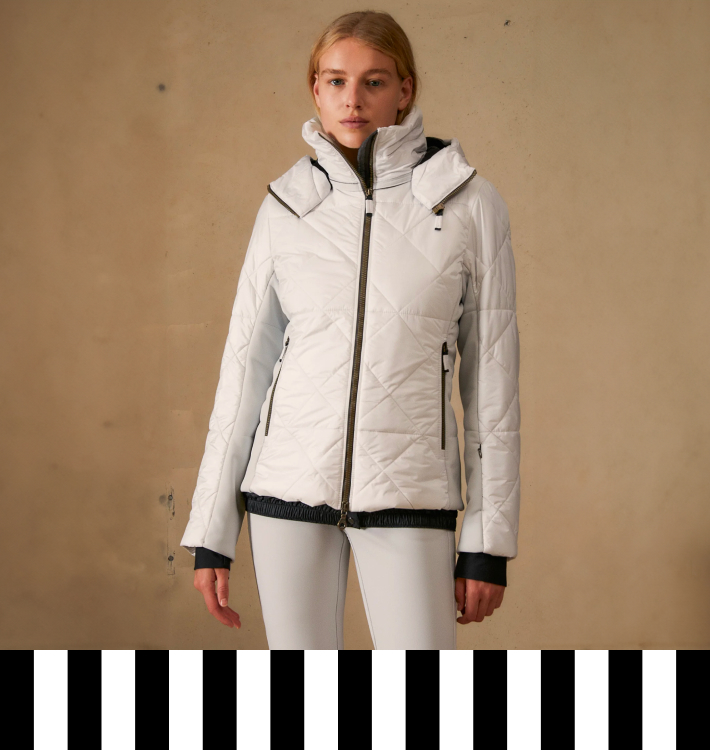Would you like to hurtle down the snowy slopes in total comfort and style? It’s easy if you know how to choose the right ski clothing online. It doesn’t matter whether you’re a beginner or an experienced skier, in this comprehensive guide we’ll give you all the tips you need to find the ideal outfit for your winter descents.
For a mountain getaway, packing versatile attire is essential for adapting to changing weather and various activities. Opt for high-quality technical fabrics that offer warmth and comfort without adding bulk, enabling lighter and more efficient travel, especially for skiing.
Here is a list to keep an eye on to make sure you have everything you need for a ski vacation:
- Jackets: to maintain optimal thermal comfort, opt for waterproof and breathable jackets. The Phenix brand stands out for its unique combination of superior quality and eye-catching design, ensuring not only warmth but also unmistakable style on the slopes.
- Pants: ski trousers are the optimal choice, providing both comfort and durability, ideally with integrated gaiters for enhanced snow protection. For female skiing enthusiasts, Frauenschuh ski pants embody a perfect blend of elegance and femininity.
- Thermal base layer: opt for thermal and breathable clothing. Uyn thermal base layer offers a variety of fabrics, including synthetics and naturals such as merino wool, cashmere, and kapok (also known as vegetable wool), as well as options in bio-natex, an eco-friendly choice derived from castor oil, offering comfort and sustainability.
- Ski socks: the choice between natural and synthetic fibers depends on personal preferences and specific needs related to skiing. The Uyn brand offers socks made from both types of fibers, including bio-natex and merino wool, perfectly adapting to every need.
- Ski equipment: investing in high-quality equipment specifically designed for skiing is crucial for safety. It is essential to select ski helmets and ski goggles that offer maximum protection and durability for a safe and enjoyable experience on the slopes.
- Ski gloves: for those seeking advanced solutions against the cold, Lagazoi introduces Lenz heated gloves. These not only provide a barrier against the cold but also offer active warmth, ideal if you are looking for superior thermal comfort.
- Beanies: it is crucial to remember that wearing a winter beanie under a ski helmet is an inadvisable practice. This behavior can seriously compromise the integrity of the helmet’s fit to the head and, consequently, its ability to provide protection
Top tips for buying ski clothing online
There are a number of features to consider to make sure you buy comfortable, long-lasting ski gear. Follow our valuable tips:
- What to layer under your ski jacket?
- Thermal insulation: a guide to ski clothing padding
- Choose waterproof fabrics for your snow adventures
- Choose breathable clothing even on the slopes
- How to choose the right ski clothing size online?
- Crafting the ideal outfit for your skiing style
- Where to buy high-quality ski clothing
What to layer under your ski jacket?
For increased versatility and the ability to adapt to various temperatures without the need for separate garments, consider utilizing the layering system. This approach involves wearing multiple layers of technical clothing, allowing you to adjust your outfit effortlessly based on the weather, slope conditions, or season.
One of the most widely used systems is the three-layer system:
- Base layer: in contact with the skin, it is responsible for absorbing sweat and wicking it away from the body, keeping you dry and warm. It should be made of breathable, technical material, such as merino wool or polypropylene.
- Middle layer: provides thermal insulation and retains body heat. It can be made of fleece or down, depending on temperature and activity level.
- Outer layer: protects from the elements such as wind, rain and snow. It should be waterproof and breathable, like a hardshell or softshell jacket.
Advantages of the layered system
- Temperature regulation: you can add or remove layers as needed and according to different weather conditions.
- Breathability: this system allows moisture to escape, preventing you from getting sweaty and wet.
- Comfort: technical garments are lightweight and comfortable to wear, giving you maximum freedom of movement.
- Versatility: you can use the same garments, modulating the layers, for different seasons or for different outdoor activities, not just skiing.
Thermal insulation: a guide to ski clothing padding
Thermal insulation is essential for high-mountain adventures, guaranteeing optimal enjoyment during descents by shielding against the cold and preserving body heat, even during moments of rest such as chairlift rides. In the wide range of ski clothing available today, it is essential to be able to recognize quality garments. Among the various options you might find while shopping online, you’ll want to pay attention to the fabrics and type of padding. Certainly, technological materials offer a number of interesting and advantageous properties, such as insulation and wind protection.
Down, which is recognized as one of the most effective natural insulators, offers varying performance depending on the specific type used, is available for padding. The insulating capacity of down increases with the amount of air trapped between the feathers; therefore, the more space between them, the greater the insulation provided, making it an ideal option for those who are particularly sensitive to cold.
Unlike natural down, which can experience a reduction in its insulating capabilities in the presence of moisture, synthetic down excels in its resilience under such conditions. To ensure that you get high-quality, highly insulating down, it is advisable to look for products that carry the Primaloft label. Synthetic fabric can offer varying degrees of insulation, depending on the material used and its density (from 80 grams per square meter of a light jacket to 120 grams of a jacket that keeps you very warm).
Choose waterproof fabrics for your snow adventures
The waterproofness of a piece of ski clothing, given by the presence of an inner membrane, is a key factor. It is quantified in millimeters of water column (mm), a parameter that indicates the maximum pressure a fabric can be subjected to before water begins to seep through it.
The higher the value, the greater the water resistance. In general, a ski garment should have a water resistance of at least 10,000 mm to be considered effective. For heavy snow conditions, or for those who train frequently and at high intensity, waterproofness of 20,000 mm or higher is recommended. Then there are other details that can provide superior protection, such as heat-sealed seams and water-repellent zippers.
Differences between ski jackets and hardshells
When it comes to winter sports clothing, it is crucial to distinguish between ski jackets and hardshells.
Ski jackets, typically padded, offer warmth and protection against cold, wind and moisture by combining insulation with waterproof fabrics. Hardshells, on the other hand, are not padded but excel in waterproofing and wind resistance thanks to technical fabrics such as the certified Gore-Tex membrane, renowned for its performance. The shells provide breathability and, although they do not provide direct warmth, they allow flexible thermal management through the use of intermediate layers. The choice between ski jackets and hardshells is therefore based on specific activities, weather conditions and personal preferences.
Choose breathable clothing even on the slopes
Whether embarking on winter outdoor excursions marked by rigorous physical activity and the essential requirement to stay dry, or hitting the ski slopes, the difference often lies in wearing clothing with sufficient breathability.
Breathability is measured by the rate at which water vapor passes through one square meter of fabric over 24 hours (g/m²/24h). We can therefore find the following values:
- 5,000 g/m²/24h: Low breathability, suitable for casual skiers or cold, dry weather conditions.
- 10,000 g/m²/24h: Medium breathability, suitable for intermediate skiers or variable weather conditions.
- 20,000 g/m²/24h: High breathability, suitable for active skiers or hot and humid weather conditions.
How to choose the right ski clothing size online?
When buying clothing online, choosing the right size is crucial to avoid mishaps and unwanted returns. However, if you find that you have selected the wrong size or simply want to change items, don’t worry: Lagazoi makes the return process as easy as possible, ensuring a stress-free and completely smooth experience.
Only with the right size you will feel truly comfortable in the snow and achieve ideal thermal insulation. Since each brand has its own sizing system, we recommend that you take your measurements with a dressmaker’s tape measure, possibly getting someone to help you so you don’t make a mistake. With your measurements in hand, consulting the size guide will be easier and more straightforward.
We also suggest that you not only calculate the inches but also consider the type of fit you usually prefer, more snug or looser. In making your considerations, also keep in mind the fact that, below a pant or jacket, you will definitely need to wear other layers.
Crafting the ideal outfit for your skiing style
The specialty practiced also determines the preferred clothing:
- Slopes: over the course of the day there will be several cooling moments, such as on the chairlift. We therefore recommend choosing close-fitting, waterproof and warm garments.
- Cross-country skiing/hiking: prefer close-fitting but flexible clothing that promotes freedom of movement and agility. Wearing a base layer, such as tights or thermal pants, is also essential.
- Off-piste/Freeride: You need sturdier, more durable garments with added waterproofing and breathability. Opt for clothes that are cut loose enough so you can move freely. The last layer should consist of a hardshell for both jacket and pants. Brands like The Mountain Studio and Peak Performance are renowned for their ability to combine cutting-edge technology, making them ideal choices for freeriders who want the best in protection.
- Snowboarding: you’ll need soft, flexible garments with knee reinforcements. Then there are specific dungarees (bibs) that keep you warmer and insulate more from the snow.
Where to buy high-quality ski clothing
At Lagazoi online shop you can find a wide range of clothing and equipment for your outdoor activities in the mountains, with a focus on technical ski clothing. A wide selection of men’s alpine ski clothing and women’s alpine ski clothing from the best brands on the market is available. Such as the Japanese brand Descente, which stands out for its use of innovative materials and technologies, combined with modern and attractive design. Or Sease, an Italian company that makes ski clothing using high-quality technical materials that ensure waterproofing and breathability for optimal performance on the slopes.
Choosing skiwear online requires a bit of attention to make the right decision from dozens of different options. If you have any doubts, don’t hesitate to contact us. Your safety and comfort on the snow is our priority.


